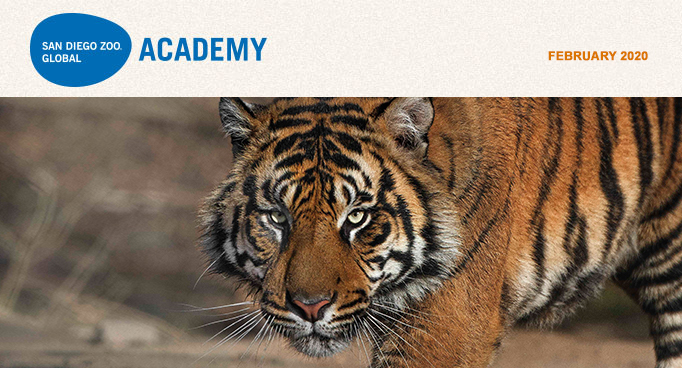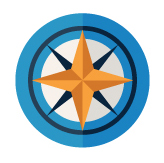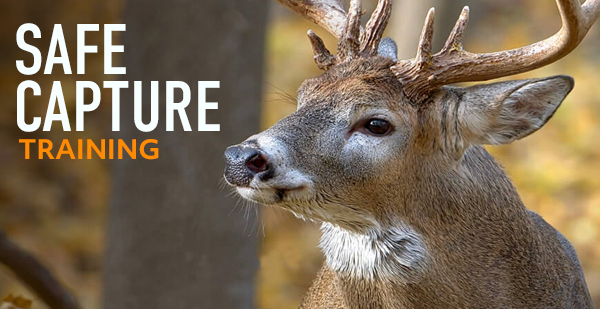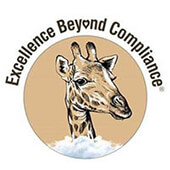 |
Emergency Recall Training
 By Gary Priest, Curator of Animal Care Training, San Diego Zoo Global Academy By Gary Priest, Curator of Animal Care Training, San Diego Zoo Global Academy
For me, this month’s column is an especially personal one. After nearly 36 years with San Diego Zoo Global, I will be retiring in a few weeks, and this will be my last contribution to the Academy Newsletter.
It is my honor to introduce you to the new San Diego Zoo Global Academy Emergency Recall course, which will be launched this month. I believe that this course is quite possibly the most important course produced by the Academy. I am certain that the materials presented in this course will enhance animal welfare and care, and save animal lives—possibly even human lives, too.
Last September, at the Association of Zoos and Aquariums (AZA) Annual Conference in New Orleans, Jon Prange and I presented an overview of this course that animal care staff at the San Diego Zoo have been developing over the past five years. The Emergency Recall course begins with a topic overview of what an emergency recall is and, equally important, what it isn’t. The course overview section is a prerequisite to five case studies that describe how an emergency recall procedure can be developed for gorillas, lions, tigers, polar bears, and brown bears.
The course teaches animal care staff the process for winning organizational support for recall training; suggests some best practices for your team’s operations, each animal’s natural history, and its training implications; and several species-specific recommendations for the conditioning of a true emergency recall.
The idea underpinning the emergency recall is this: an animal becomes so finely conditioned to a specific recall stimulus that when it sounds, the animal stops whatever it is doing and moves immediately from its habitat and into its den. Each of the five case studies features a video showing that, in every case, the results are dramatic. If you doubt the truth of this statement, I challenge you to take the course overview so you can view the tiger emergency recall video case study.
The Academy is indebted to Animal Planet for allowing us to include this remarkable footage of an actual emergency recall with one of the San Diego Zoo’s tigers. It is one of the most impressive animal videos I have ever seen. The Animal Planet crew was on our grounds at the Zoo filming a story about tiger enrichment, for a segment that would appear in their television series The Zoo: San Diego. For this filming, a full sheep carcass was suspended from a tree in the tiger habitat by a chain, about six to seven feet above the ground. A full carcass is a rare and highly desirable treat for the tigers. With cameras rolling, the adult male tiger entered the habitat. The big cat quickly caught the scent of the carcass and jumped up to grab it. His powerful neck and shoulder muscles rippled as the cat sunk his teeth and claws into the carcass. The big cat tried to pull the prey down several times, without success. Then suddenly, the branch the carcass was suspended from unexpectedly broke off. Immediately, the tiger snatched the carcass and dragged it, the chain, and the tree branch down to a low point in the habitat, into a shallow cave where he could enjoy consuming his prey in seclusion.
The surprised animal care staff were concerned that the tiger could be injured by the metal chain. The cameras caught the moment where one of the team said that maybe they could use the emergency recall behavior they had been training, calling the cat into his den so the chain and pieces of tree branch could then be removed. The staff determined that they had everything to gain and nothing to lose by sounding the recall stimulus. The Animal Planet cameras caught the drama. The tiger’s response was absolutely remarkable: he heard and recognized the recall sound, and left his very desirable prize to bound up the hill and go back to the tiger dens. The process worked beautifully.
The Emergency Recall course is a component of the Academy’s new Safe Capture program, and it teaches how to develop a recall procedure like this one for our tiger. I can think of no higher priority for any of us who are committed to best practices in animal care than working to save animal and human lives, and being able to quickly and reliably call an animal out of a habitat and away from a dangerous situation is invaluable.
To learn more about how you can access this training, please contact Jon Prange at jprange@sandiegozoo.org or Linda Duca at lduca@cypherworx.com
A Note of Farewell
In a final acknowledgement as I retire, I would like to recognize three very important people to the Academy, and to me.
Rob Jones, DVM, and attorney/author Jim Gesualdi are long-time Academy columnists whose regular contributions have added a special dimension to the growth and value of this newsletter. Both men are at the very pinnacle of their profession and enjoy an enormous professional reputation. I am so blessed, not only to know them, but to count them as close friends. Both of these men have devoted their professional lives to advancing animal care and welfare, which is a strong glue that binds us all together. I cherish the intellect of these men and their friendship, and I will miss them dearly.
Finally, a word to Jon Prange, the Academy’s director and my dear friend of 30 years: Jon, I have enjoyed every minute of our adventure together. The Academy has taken the two of us to cities all over the United States, and forged a powerful partnership. We have enjoyed great fellowship and fun, tackled a bunch of mission-related hard work, and had occasional sore muscles and some sleepless nights. We own the satisfaction of having created, in the San Diego Zoo Global Academy, the nationally recognized standard for online animal care training. I know that under your continued leadership, the Academy will innovate, grow, and serve our profession and our organization’s mission.
To my colleagues around the country and the world: thanks, my friends. It has been an amazing ride!
Happy Retirement!
Thank you, Gary Priest, for every mission-related effort you have made for animal welfare, San Diego Zoo Global, and the Academy! Enjoy the next chapter.
Wishing you all the best, from the Academy Team!
|
Academy News

San Diego Zoo Global Academy's Safe Capture Training
The San Diego Zoo Global Academy’s Safe Capture training offers in-person instruction in the safe chemical immobilization of animals, including strategies of approach, medication delivery techniques, capture pharmacology, drug dosages and volume calculations, post-capture care and anesthetic monitoring, and medical emergencies associated with chemical immobilization. We are also developing Academy course modules related to this training, so that portions of the program can be completed individually, online. In the coming months, we will share how these online modules can be accessed. Additionally, the Emergency Recall Training that Gary Priest wrote about in his column (above) will be included, as one of the key elements of Safe Capture behavior training. As Gary importantly noted, these best practices can save animal and human lives. This is why collaboration around training is so important to us.
In 2020, the Academy’s new Safe Capture program is ramping up its in-person training schedule around the country. We started with three training sessions in 2019, and we have six sessions coming up so far in 2020—please see the schedule below. When we can, we want to include our fellow zoos as event hosts for the training sessions held around the country. This is exciting because it is another way we can collaborate with one another around training.
Upcoming Safe Capture Training
To see our developing schedule of Safe Capture training events, visit the Safe Capture page on our Acadamy Website.
If you are interested in being an event host for Safe Capture training, or if you would like to discuss a training event at your college, university, or other institution, please contact us for Safe Capture.
 The San Diego Zoo Global Academy Puts Carroll University in the Spotlight The San Diego Zoo Global Academy Puts Carroll University in the Spotlight
Carroll University in Waukesha, Wisconsin is part of the Academy’s collaborative learning environment!
 Find Us on LinkedIn! Find Us on LinkedIn!
San Diego Zoo Global Academy is now on LinkedIn. We feature new posts frequently, highlighting Academy courses including the new Safe Capture training. For regular updates, check it out and follow us on LinkedIn. Tell your friends in the animal care profession, and help us build an ever-expanding community of connections in the wildlife world.
For more information about our LinkedIn presence, please contact Sarah Haggerty at shaggerty@sandiegozoo.org.
Administrator's Users Group Webinar
 Please join us for the Administrator's Users Group Webinar, hosted by Academy partner CypherWorx. The next webinar is Wednesday, February 19, at 11 a.m. Pacific Standard Time. Please join us for the Administrator's Users Group Webinar, hosted by Academy partner CypherWorx. The next webinar is Wednesday, February 19, at 11 a.m. Pacific Standard Time.
Register for this webinar here.
After registering, you will receive a confirmation email containing information about joining the webinar.
|
Academy Contributors
 Getting Better All the Time: Getting Better All the Time:
Investing Our Thoughts and Actions in this Moment—to Continuously Improve Things That Matter
By James F. Gesualdi
To keep ahead, each one of us, no matter what our task, must search for new and better methods—for even that which we now do well must be done better tomorrow.
—James F. Bell
If you pay attention to the present, you can improve upon it.
—Paulo Coelho
Being fully invested in the present, here and now, is the only way to go about our work on behalf of animals, the public, environments, and our planet. There are endless ways to spend our time, and Getting Better All the Time is meant to light the way toward constructive and effective use of that time right now. Many of the ideas and tools have evolved from decades of addressing challenges and difficult situations, and responding to crises. Yet, the focus is always to bring us back to what we can do in the only window to do it: the present moment.
Questions are invaluable in getting our thoughts going in the right direction. Among the best are:
- How does this serve this individual animal or group of animals?
- How can we better serve this animal or animals, their interests, protection, and well-being?
- What can I/we do to be better at improving animals’ lives?
- What am I/are we missing here that could help this animal or group?
Questions, conversations, collaborations, using our thoughts and thinking to grow and make positive changes: all, as always, in the present.
Being at our best personally and professionally helps fulfill our responsibilities to animals and people. Being responsible means that we have the power to change things for the better, right now. And that leads us to serving animals—their interests, protection, and well-being. That is what we are called to do, and the public, our critics, government regulators, and the media all hold us accountable—but we are always first to hold ourselves to account. We have also come to understand that accountability and transparency in action are powerful factors in upholding and maintaining the public trust. Serving animals, their interests, protection, and well-being with accountability and transparency makes us responsible for creating a brighter future for animals and the zoological community. Let’s get to it in the only time we have: this precious moment.
We have the animals in our care, the expertise, and the heart to make it all about the animals—not us or "them," but the animals. They are the very beings that inspire us to do our best and continuously improve, as we do good for the animals and our planet.
Reaching for Continuous Improvement
The Excellence Beyond ComplianceŽ book, currently out of print, remains a fundamentally solid resource for continuously improving ourselves, our organizations, and our service on behalf of animals, their interests, protection, and welfare. Some of the policies, practices, and regulations for the U.S. Department of Agriculture (USDA), Animal and Plant Health Inspection Service (APHIS), and the Animal Welfare Act (AWA) have changed, as have other factors, and the zoological community’s approach to animal welfare has advanced. Nevertheless, the Excellence Beyond ComplianceŽ book, philosophy, and daily practices provide the most effective means for constructive action, critical self-examination, and continuous improvement. This column, other writings, and talks and presentations to a wide variety of audiences (and the feedback from all these activities) continue to produce innovative new ideas and practices.
Two recent publications (as well as one earlier companion piece) are highly recommended for zoological community reading and consideration, with respect to serving animals with greater accountability and transparency.
“Constructive Tools for Greater Transparency to Drive Continuous Improvement in Animal Protection and Welfare”
This article was just published by the American Bar Association (ABA) Tort Trial and Insurance Practice Section Animal Law Committee. Practices discussed include: Mission Statement; Animal Welfare Policy/Plan; Self-Certified Compliance Reporting; Self-Posting Inspection Reports; Periodic Reports; and Third-Party Reviews. This article builds on a 2017 piece also published by the ABA: “Animal Welfare Act: Good Practices to Advance Animal Interests and Well-being.” This article also discussed board-level engagement and oversight regarding animal welfare, the Animal Welfare Officer, and Animal Welfare Leadership Group.
The Excellence Beyond ComplianceŽ approach and these two articles have become increasingly important and timely, especially in light of the pending proposed rule on licensing, which, if enacted, would require U.S. Animal Welfare Act-licensed exhibitors to obtain an entirely new license every three years. See Animal Welfare; Amendments to Licensing Provisions and to Requirements for Dogs, 84 Fed. Reg. 10721 (proposed March 22, 2019), available here.
“Good Practices for Zoological and Other Animal-Related Organizations to Handle Concerns and Complaints”
This article was recently published by the New York State Bar Association Committee on Animals and the Law, in its publication Laws & Paws. It discusses concerns and complaints, the Association of Zoos and Aquarium’s required process for handling animal welfare concerns, and USDA’s means of dealing with AWA-related complaints. Good practices for effectively addressing concerns and complaints include:
- awareness and understanding
- the “four pillars”—self-help, normal chain of command, Animal Welfare Officer/AWA Compliance Officer, and/or formal submission to Animal Welfare Leadership Group or Animal Welfare Committee
- communications and messaging.
The Laws & Paws Winter 2019 issue is available here.
***
For copies of any or all of these articles, please email me at jfges@aol.com or jfg@excellencebeyondcompliance.com, or email Academy Director Jon Prange at JPrange@sandiegozoo.org.
©2020 James F. Gesualdi, P.C. The opinions expressed herein are solely those of the author. This is not, nor should it be construed as, legal advice.
For more information on EXCELLENCE BEYOND COMPLIANCEŽ contact James F. Gesualdi, P.C..
A Note of Gratitude to a Dear Friend, Colleague, and Leader in Innovating to Improve Animals’ Lives
For decades I have been aware of Gary Priest, and at least some of his professional activities and significant contributions to the marine and zoological communities. Since embarking upon this column five years ago, I have been most fortunate (blessed, actually) to get to know and work with Gary. His passion, insight, beautiful writing, and genuine goodness have been an illuminating presence. And he has been a lifelong and tireless force for enhancing animal welfare.
Gary’s retirement, and Dr. Janssen’s moving piece about him in the January Academy newsletter, helped me to realize that we will continue to benefit from Gary’s “presence,” because of the lasting impact of his good works and teaching. Our efforts and animals’ lives will forever be better because of Gary. He is very much full of life and as youthful as ever, and he has already been a role model for living a life well spent—but there is much more living ahead. Thank you, friend.
Those whom we love and lose are no longer where they were before. They are now wherever we are.
— Saint John Chrysostom
|

|